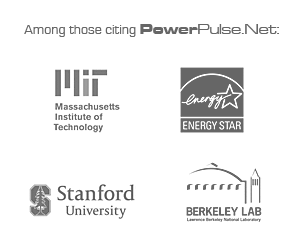Digital Control: The Essential Engine for Controller ICs targeting LED Retrofits

At the recent Strategies in Light Conference in California, key stakeholders in the global lighting industry gathered for thoughtful discussions on trends influencing the development and adoption of technologies throughout the LED/Solid-state Lighting (SSL) market.
At the recent Strategies in Light Conference in California, key stakeholders in the global lighting industry gathered for thoughtful discussions on trends influencing the development and adoption of technologies throughout the LED/Solid-state Lighting (SSL) market.
The sustained trajectory of the conference, now in its 14th year, is evidence that SSL has entered the mainstream. By 2020, says a McKinsey report, the global lighting market is expected to reach $135B.
Steady adoption has been driven by a variety of factors. At the high level, it’s a blend of worldwide legislation and growing eco-awareness. This is increasingly evident in the US as municipalities begin piloting retrofit programs realizing the financial and environmental benefits associated with these programs.. More importantly, at the functional level, LED bulbs are higher-performing, longer-lasting and more reliable than ever before. Costs are also dropping – which will see them become a more affordable energy-efficient light source alternative.
One critical technology that has helped speed LED adoption and lower costs is the controller IC. And at Strategies in Light, latest innovations in this area are likely to be a hot discussion topic. As LED technology evolved, IC designs went through their own renaissance to keep pace with the rigorous performance and reliability imperatives of the bulbs. Digital power is quickly becoming an essential ingredient in the new controller ICs – preferred over traditional analog solutions for its flexibility, stability and consistent performance over the lifetime of the product.
Digital circuitry enables the implementation of functionality that is difficult if not impossible to implement using analog circuitry. This opens up new approaches to the whole control function. One example is the capability to bring the full control loop inside the IC, thus eliminating the external components that are required for analog loop compensation. Two components that can be easily eliminated with no performance sacrifices are opto-couplers and electrolytic capacitors. By stripping redundant components, complexities are reduced, form factor shrinks, cost comes down and reliability is improved.
Further, implementing adaptive control becomes a real possibility opening up the capability to optimize the performance over a wider range of operating conditions and operating modes. In addition, calibration techniques are more feasible, allowing correction of not just linear static error sources but also the capability to implement advanced correction for non-linear error sources. Further, digital designs do not age or drift with time, insuring that you get a more consistent performance over the lifetime of the product.
But superior digital algorithms alone aren’t sufficient to meet the needs of today’s bulb manufacturers and module designers. Their priorities are to produce bulbs that are affordable, long lasting, flicker-free, compatible with existing fixtures and easy to integrate.
This means ongoing innovation for controller ICs is essential.
Take the bulb design, for example. It’s complex and very costly. Many external components are required which, in turn, contributes to a very large PCB. For retrofits, this often means a less-than-ideal fit and places a heavier design burden on the bulb maker. Ikon Semiconductor’s solution is to tackle this head-on with a single-stage primary side controlled flyback architecture that’s optimized for performance. This design configuration not only shrinks the form factor, it also increases reliability and reduces cost in comparison to two-stage designs. Additionally, and unlike many other single-stage designs, it allows OEMs to decide the optimum trade-off between the amount of PFC (power factor correction) they need and the amount of ripple the design can tolerate. This capability greatly simplifies the design process for bulb manufacturers, and further relieves costs.
























